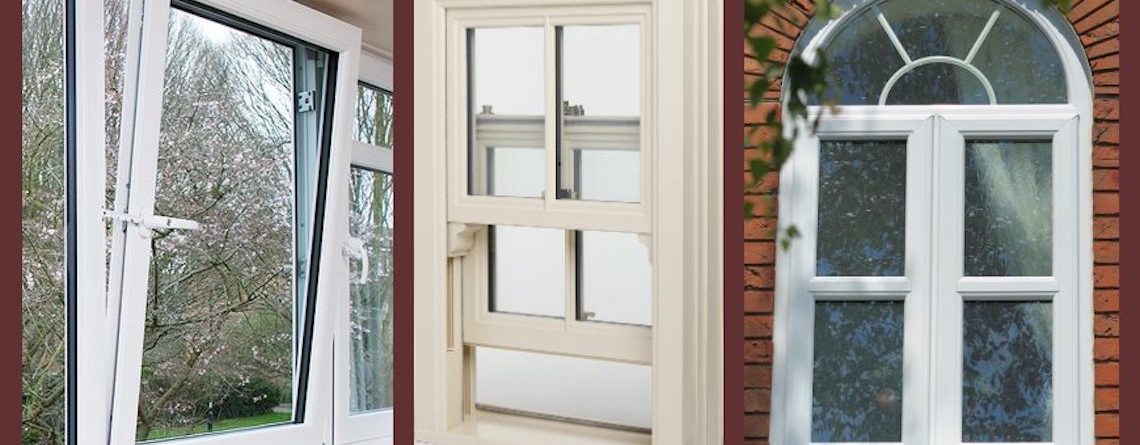The Increase of uPVC Windows and Doors: A Modern Service for Residences and Services
When it concerns selecting materials for doors and windows, residential or commercial property owners and architects today are significantly preferring uPVC. This advanced material, which means unplasticized polyvinyl chloride, uses a vast array of advantages that make it a perfect option for modern-day homes and industrial structures alike. Let's check out why uPVC windows and doors have ended up being a preferred option worldwide.
What is uPVC?
uPVC, or unplasticized polyvinyl chloride, is a rigid and durable type of plastic that is extensively utilized in the construction industry. Unlike traditional PVC, which is softened by plasticizers, uPVC maintains its strength and structure, making it highly tough and resilient. It is light-weight, weather-resistant, and needs minimal upkeep, making it perfect for applications such as windows, doors, and piping.
Benefits of uPVC Windows and Doors
Energy Efficiency
Among the standout functions of uPVC windows and doors is their outstanding insulation properties. These items help in reducing heat loss throughout the winter season and keep interiors cool during the summer. This thermal effectiveness improves energy savings by minimizing the reliance on heating and cooling systems, which is a huge plus for households and services handling increasing energy expenses.

Resilience and Longevity
uPVC is highly resistant to weather, including rain, snow, and sunlight. Unlike wood or metal, it does not wear away, rot, or warp gradually. This makes uPVC windows and doors a lasting investment that can hold up against extreme environmental conditions without jeopardizing performance.
Low Maintenance
Unlike standard wood windows that need regular sanding, painting, or varnishing, uPVC is low upkeep. An easy clean with a damp fabric is frequently sufficient to keep it tidy. Its resistance to fading and splitting makes sure that it maintains its aesthetic appeal for several years, conserving house owners considerable time and money.
Improved Security
uPVC windows and doors featured multi-point locking systems, making them highly secure. The material itself is strong and challenging to break, providing an added layer of security against intruders. This function can offer house owners comfort understanding their residential or commercial property is protected.
Sound Insulation
Sound pollution is a growing issue in urban areas, and uPVC windows and doors use a reliable solution. Designed with tight seals and double or triple-glazing options, these windows can substantially reduce outdoors sound, producing a quieter and more comfy indoor environment.
Eco-Friendly
uPVC products are recyclable, making them an ecologically friendly option. Production procedures for uPVC materials also require less resources and have a lower carbon footprint compared to options like aluminum. This interest people and companies striving to adopt sustainable practices.
Visual Appeals and Design Flexibility
Modern uPVC windows and doors are offered in a range of designs, colors, and finishes, consisting of wood grain textures, allowing personalization to match various architectural styles. From timeless to contemporary appearances, uPVC can effortlessly complement any aesthetic.
Price
Compared to materials like wood or aluminum, uPVC is reasonably priced, making it a budget-friendly alternative for both new building and constructions and restoration tasks. Paired with its long life expectancy and low upkeep requirements, it uses exceptional value for cash.
Applications of uPVC in Windows and Doors
Residential Properties: Homeowners are increasingly selecting uPVC windows and doors for their energy efficiency, toughness, and capability to reduce external sound.
Business Spaces: Businesses take advantage of the low upkeep and smooth aesthetics of uPVC installations, which match contemporary office architecture.
Remodelling Projects: Renovating with uPVC doors and windows boosts the look of older buildings while enhancing energy efficiency and insulation.
uPVC vs. Traditional Materials: A Comparison
FeatureuPVCWoodAluminum
DurabilityHighProne to rottingProne to rust
MaintenanceLowHighMedium
Energy EfficiencyExcellentModerateLow
Aesthetic VarietyWide RangeModerateLimited
AffordabilityAffordableExpensiveModerate to High
Eco-FriendlinessRecyclableRenewable but High MaintenanceRecyclable
Why Homeowners and Businesses Are Switching to uPVC
The advantages of uPVC doors and windows make them a clear option for modern building. In addition to being elegant, they add to energy cost savings, security, and sustainability. They are likewise cost-efficient, guaranteeing that structure owners get the maximum value for their financial investment.
As aluminium windows & doors and energy efficiency standards continue to progress, uPVC products are most likely to stay at the forefront of the building market. For people and organizations looking for useful, long-term options, uPVC doors and windows supply the ideal balance of performance and visual appeals.
Conclusion
uPVC doors and windows have revolutionized the way we think of building materials. Their various benefits, ranging from resilience and low maintenance to energy efficiency and price, make them a smart option for any home. Whether you are constructing a new home, refurbishing an old one, or designing an industrial area, uPVC sticks out as a trustworthy and flexible option. As technology continues to innovate, we can expect uPVC items to keep developing, further cementing their location in modern construction.
